Menu
Menu
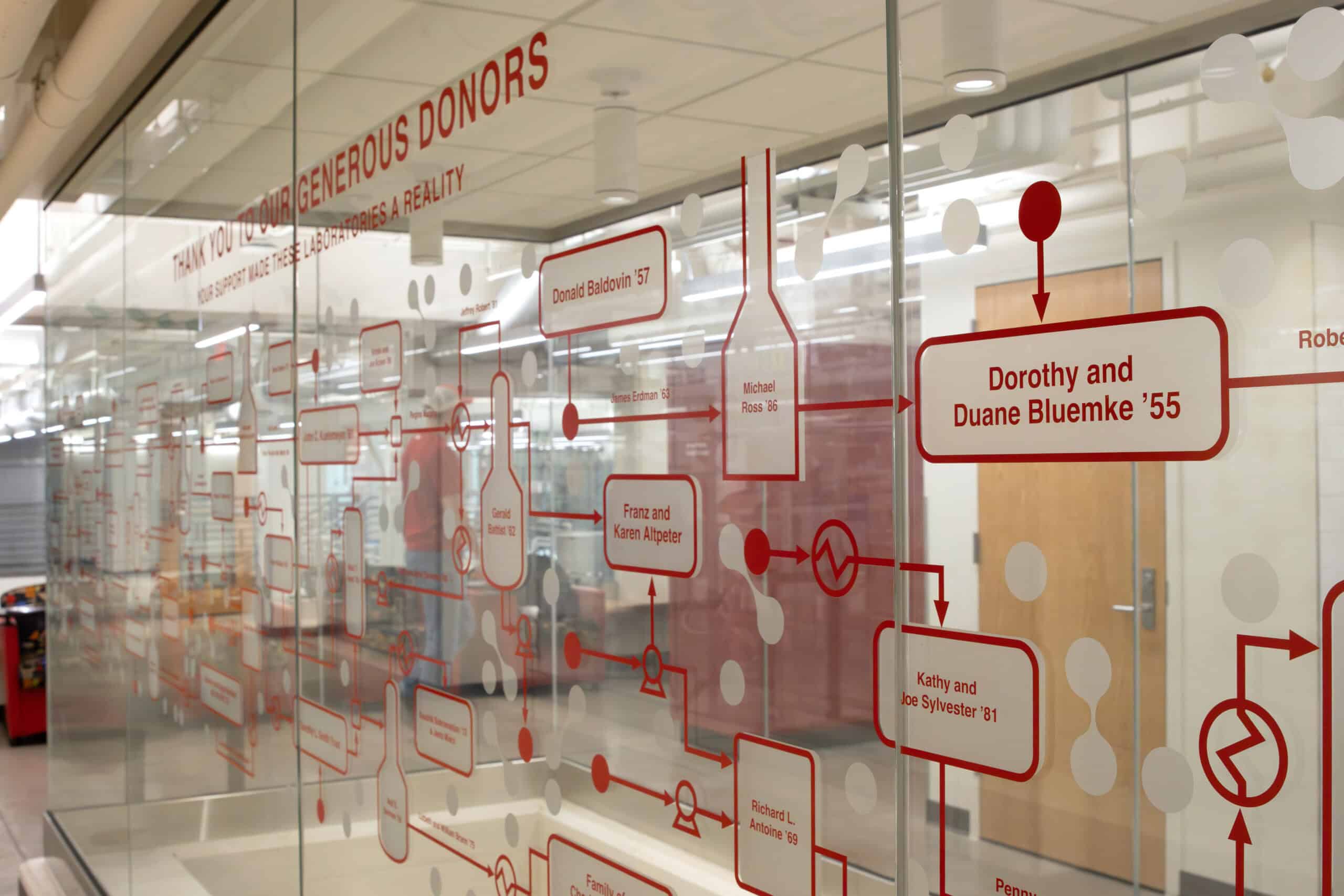


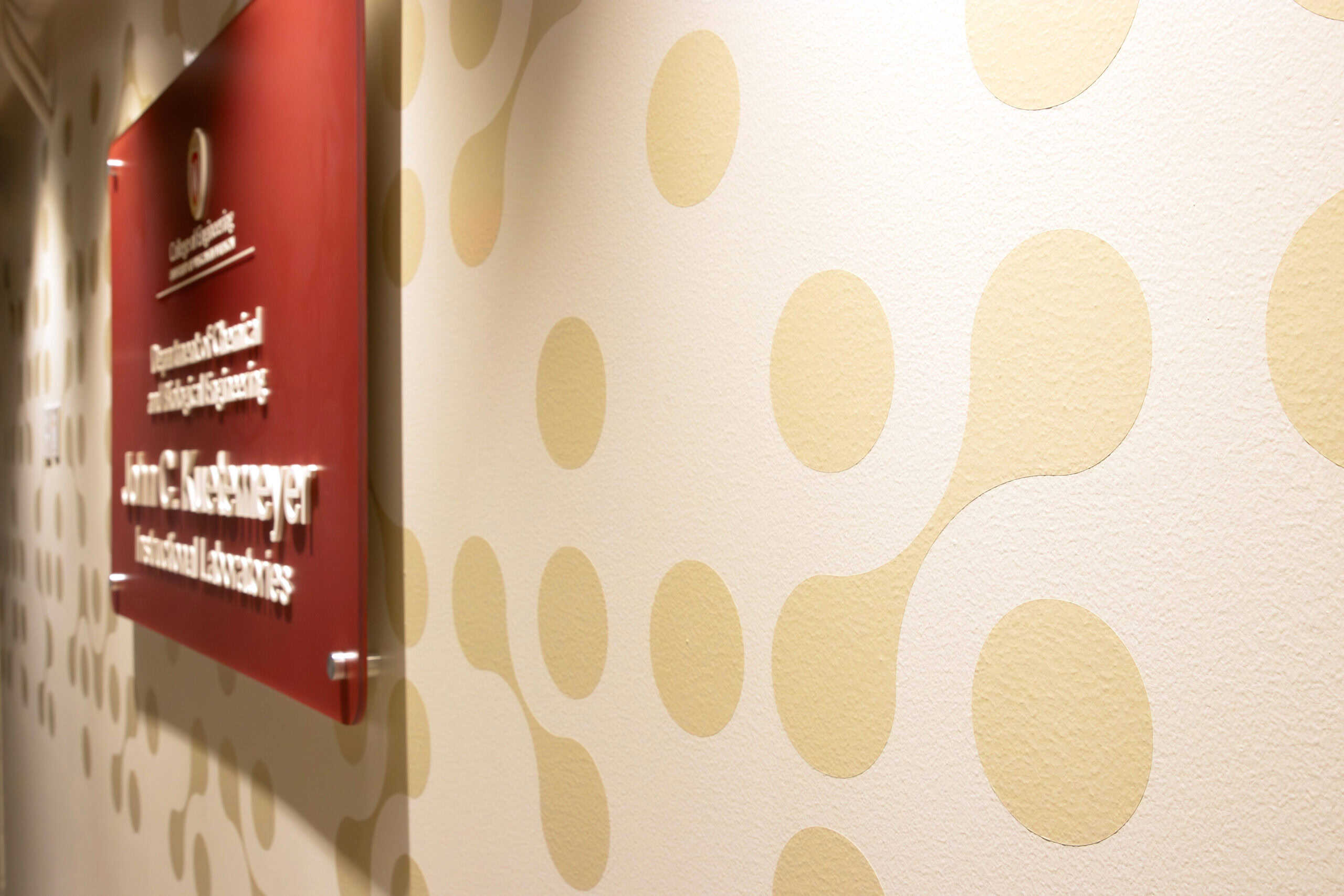
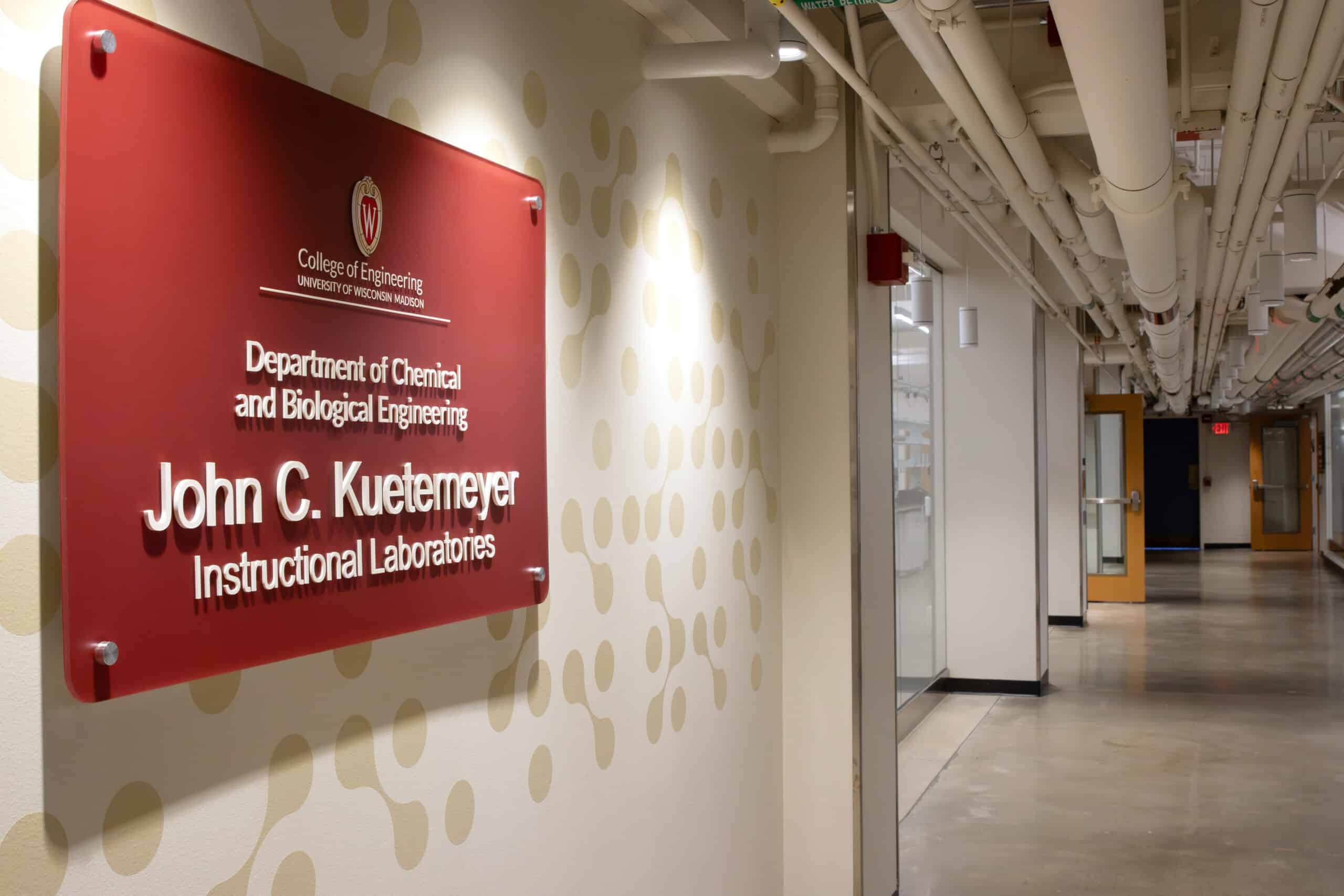
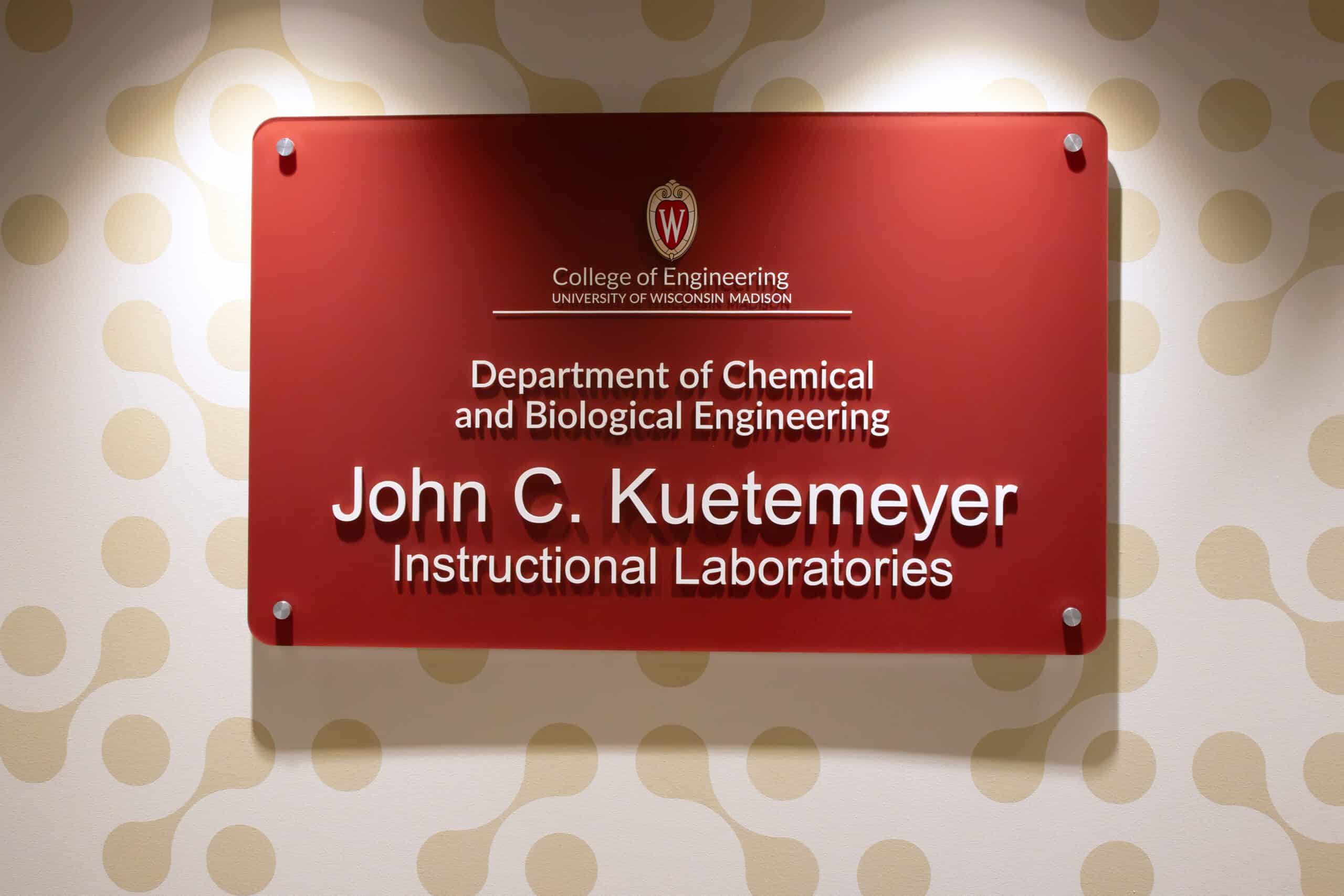
The CBE department recently underwent a major renovation—trading dark, outdated labs for bright, collaborative spaces with glass-walled visibility into real-time research. “They needed a space that reflected what engineering looks like now,” said Kris Marconnet, Senior Experiential Designer at Thysse. “The labs are dynamic, active, and cutting edge—and the space had to communicate that energy.”
That transformation sparked a new conversation: how do you celebrate the donors who made the renovation possible—without compromising the sleek, open look of the space?
Thysse collaborated with CBE to create a visually engaging donor wall that nods to the department’s scientific roots. The resulting design? A molecular-inspired layout with a stylized process flowchart—an idea initiated by Professor Regina Murphy, a longtime faculty leader in the department who’s now enjoying retirement.
“Regina really wanted to reflect the identity of the department,” said Marconnet. “But we had to find a middle ground—something that respected real engineering logic, while still looking elegant and legible on a wall.”
The donor wall strikes that balance—combining names, flow, and pattern into a cohesive display that enhances the space while celebrating the contributors who helped make it possible.
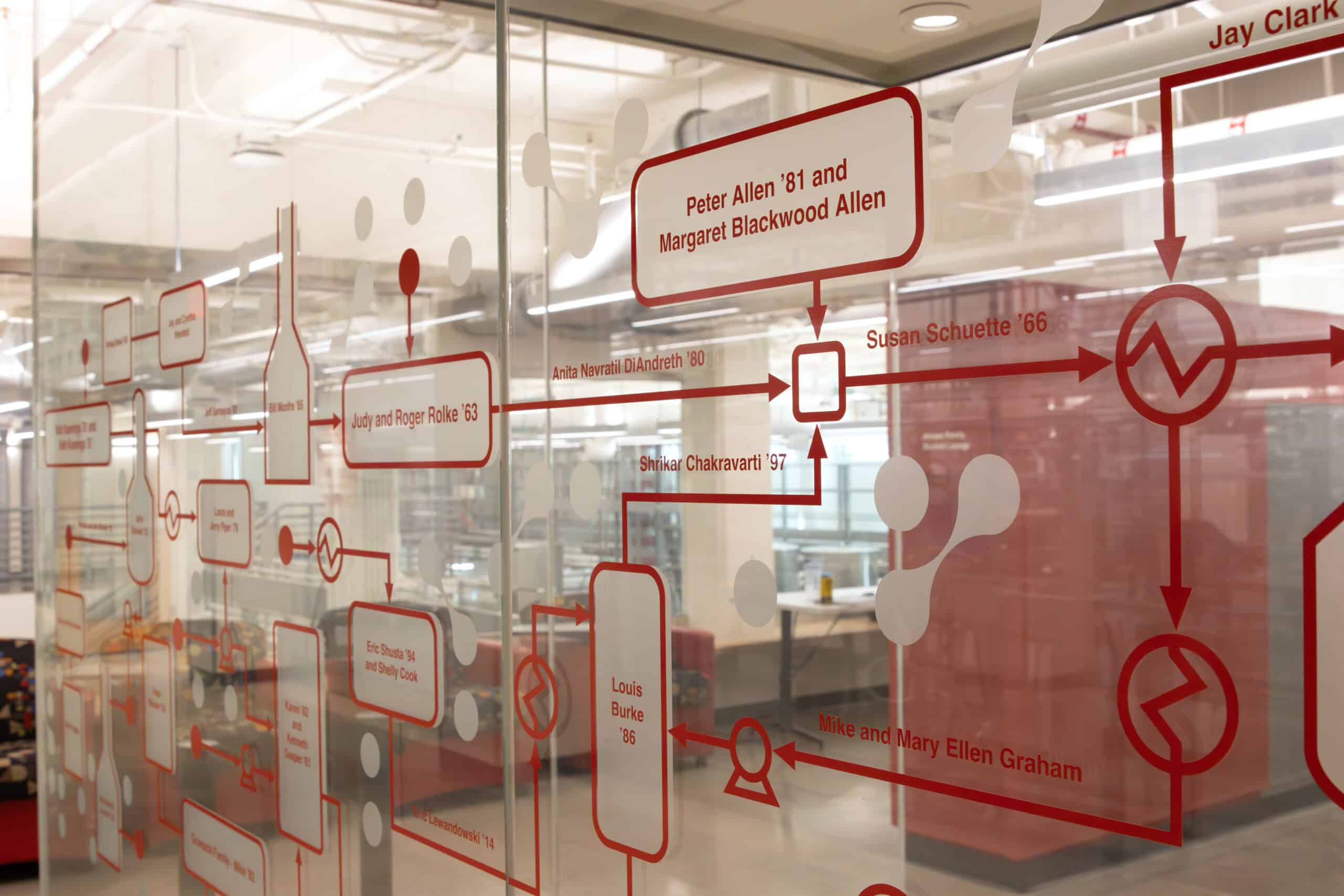
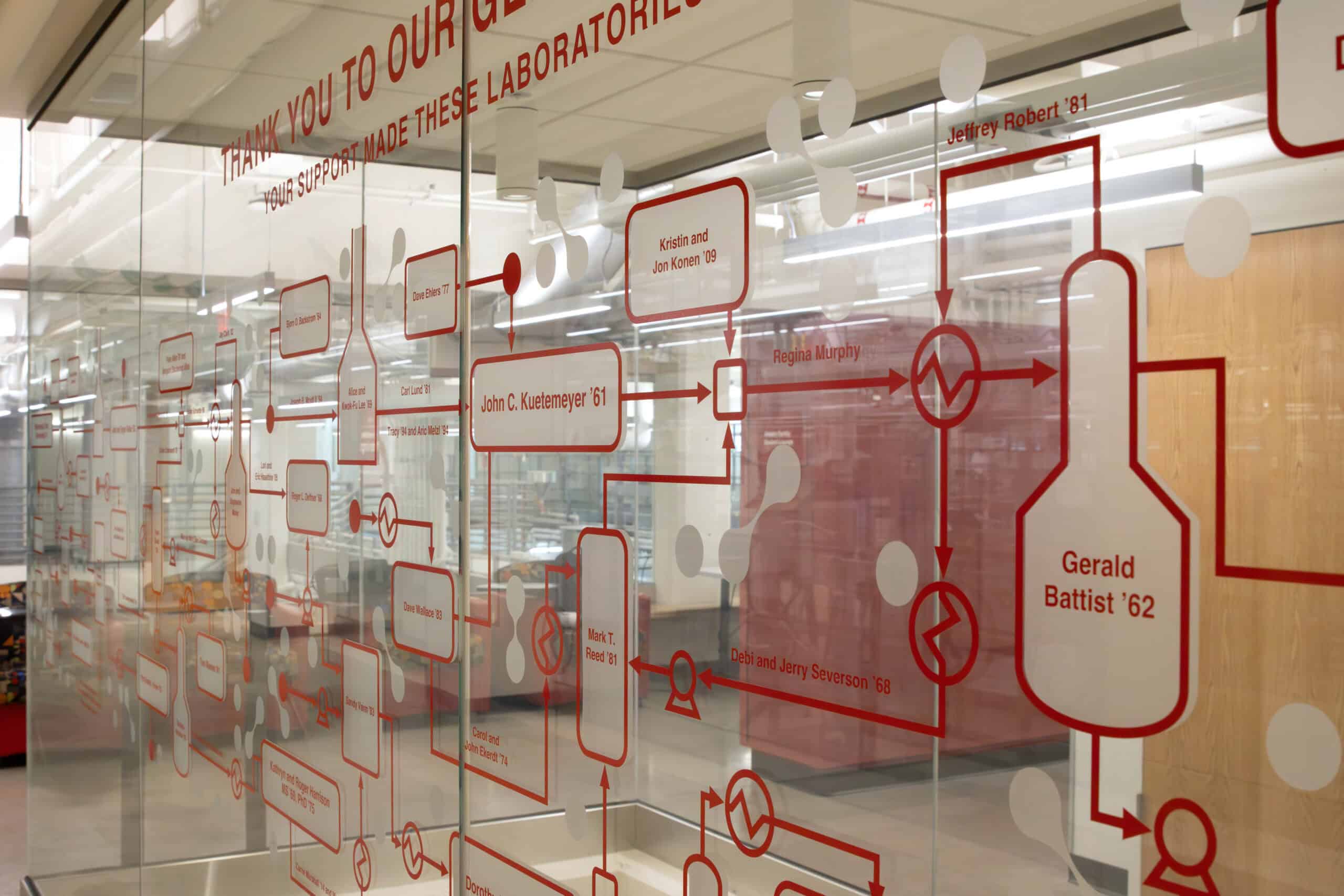
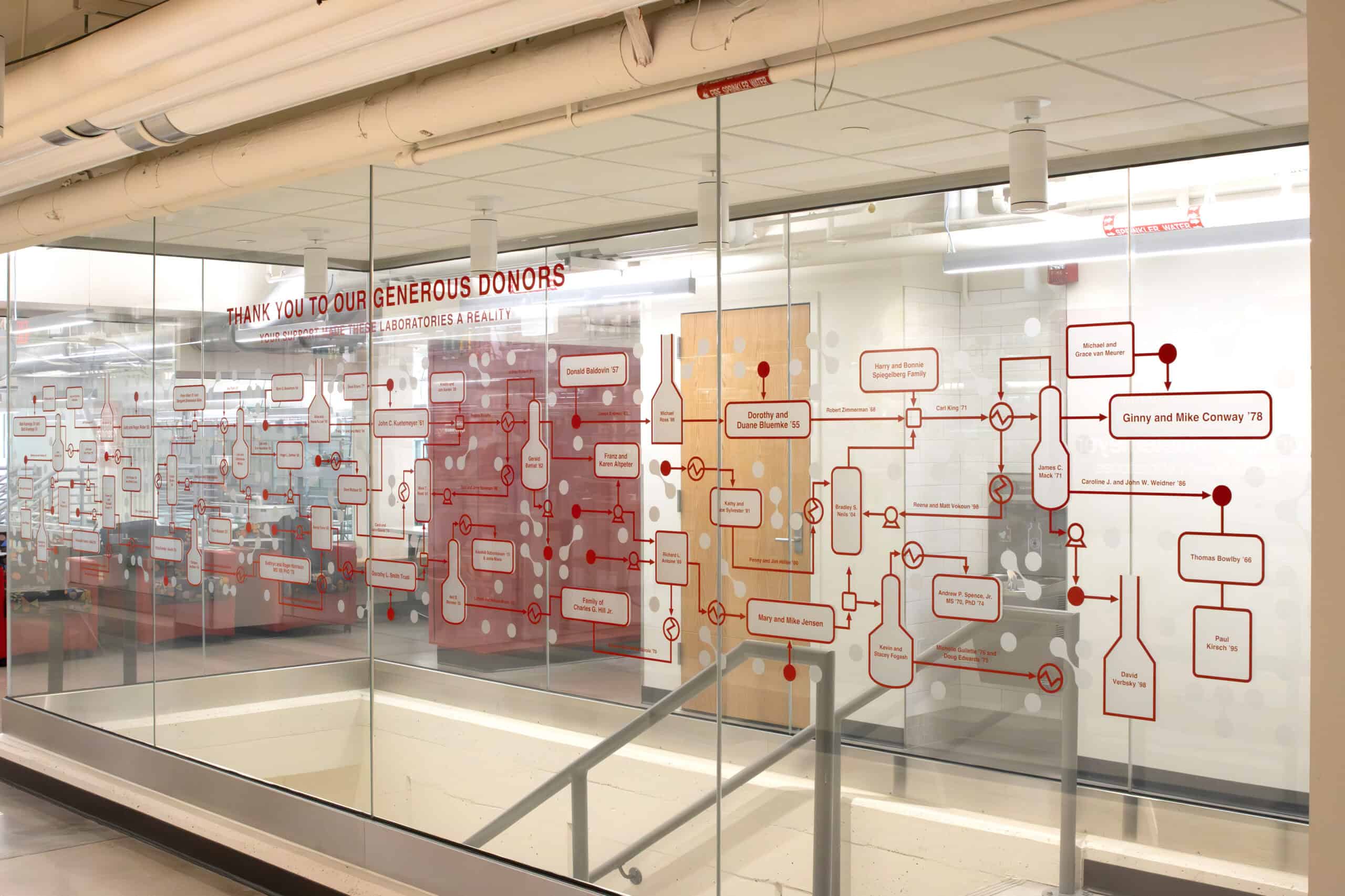
Donor signage wasn’t limited to one wall. From major laboratory spaces and instructional rooms to smaller breakout areas and even specialized lab equipment—Thysse designed plaques and signage throughout the building to highlight donor investment across all scales.
One charming detail? Even the “rigs”—unique student workstations for hands-on experimentation—were available for naming rights. “There was literally a sign-up for equipment,” Kris laughed. “It’s the kind of detail only found in engineering: If someone funds it, let’s put a plaque on it! And it actually worked out well.”
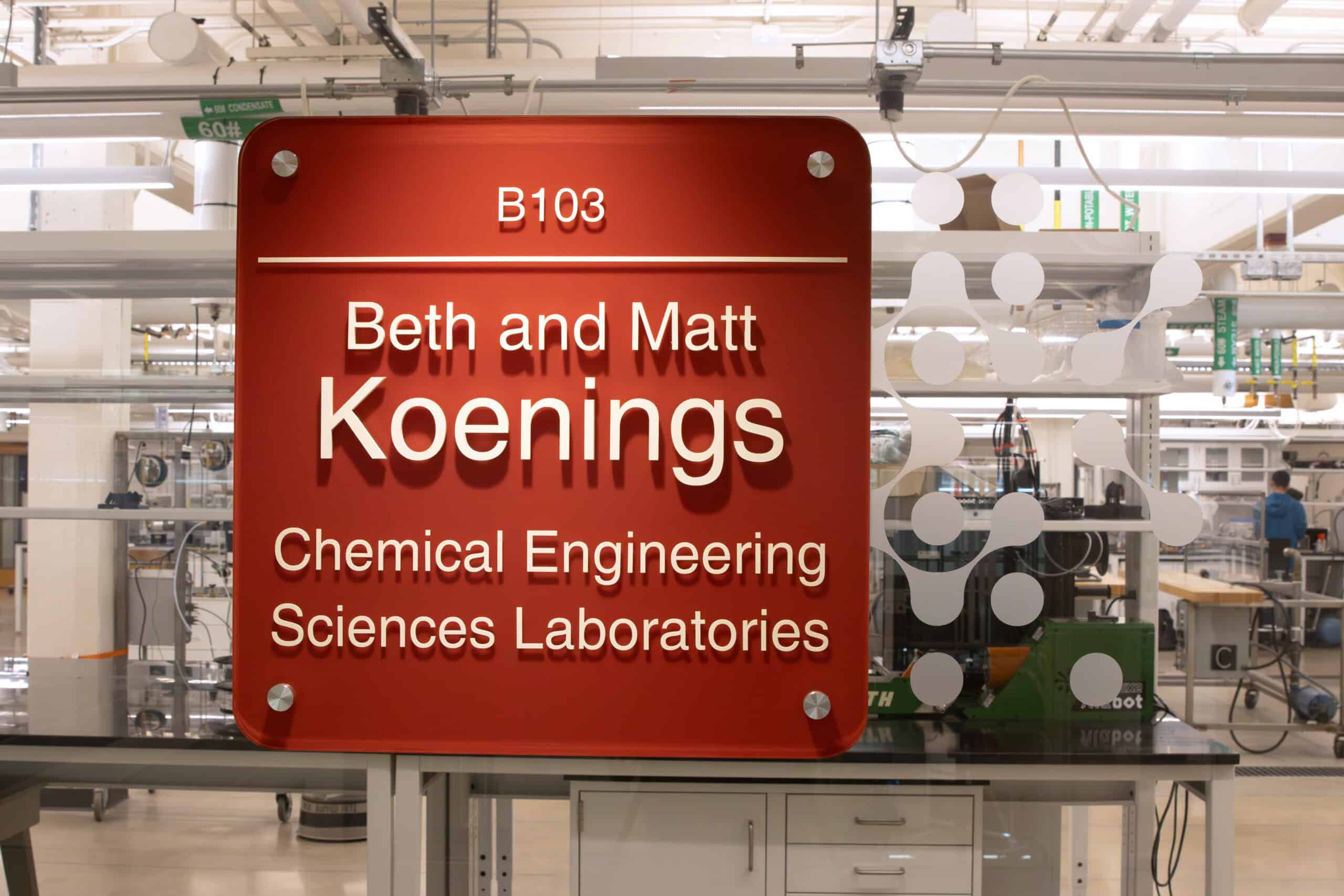
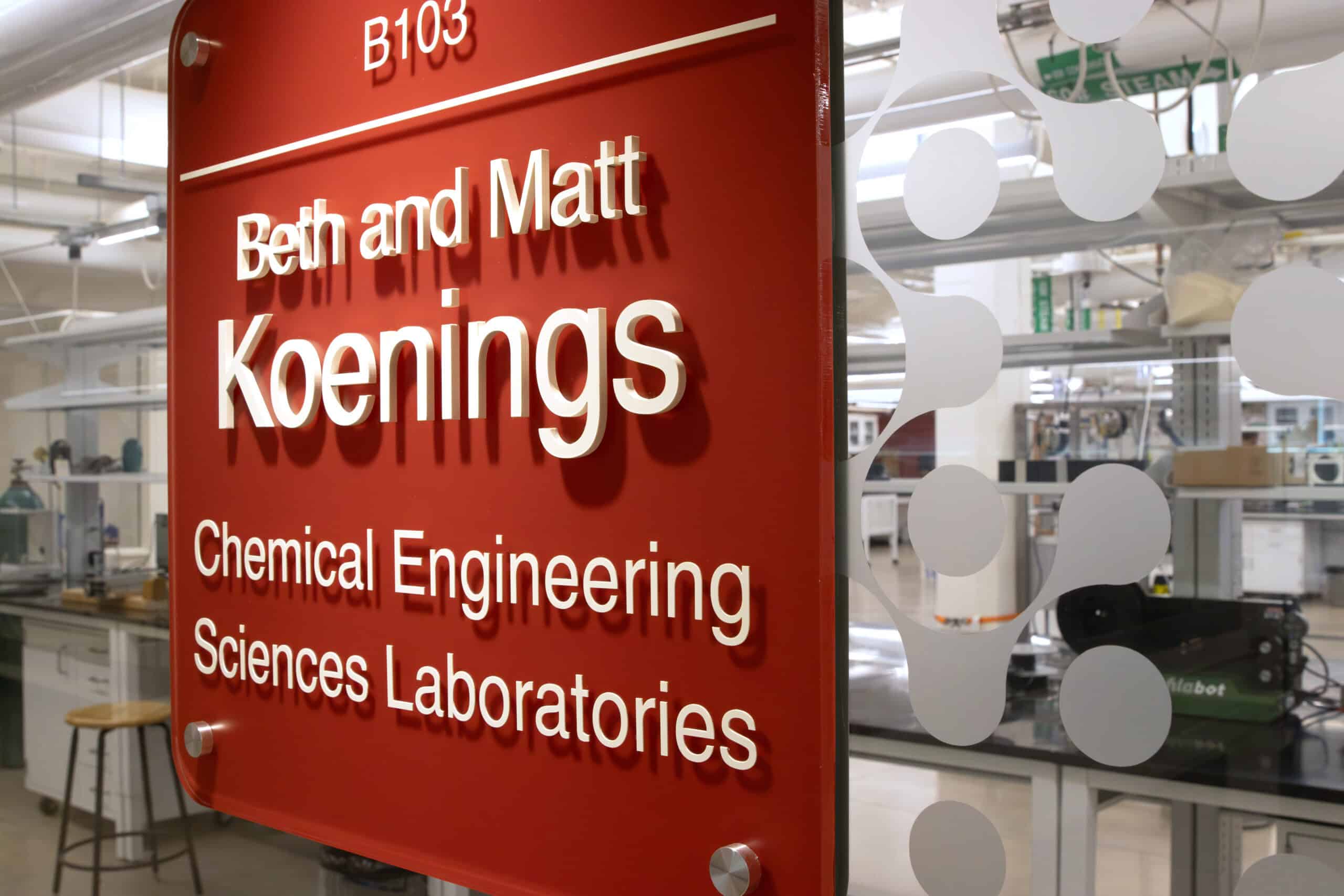

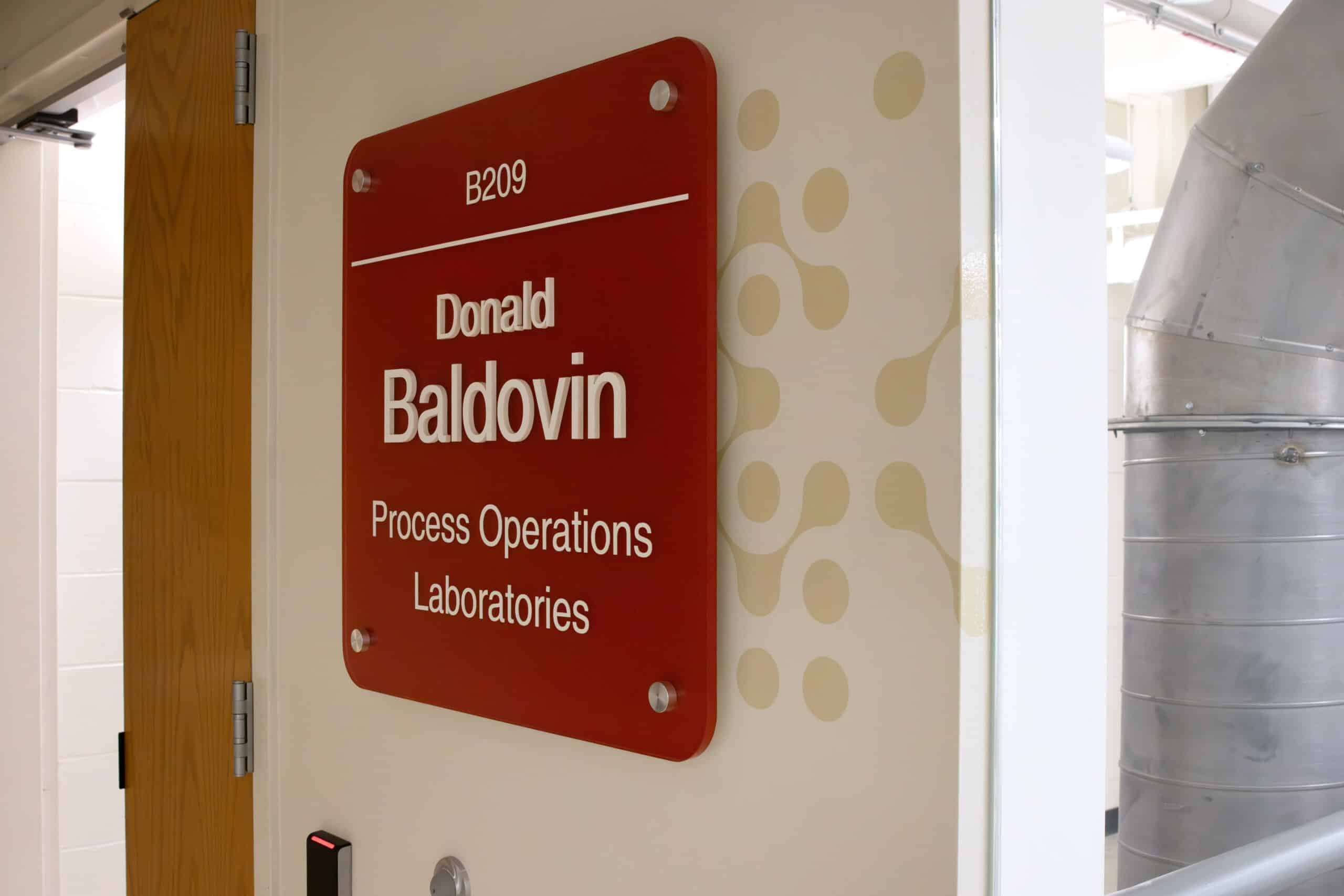
With the new building looking forward, Thysse also created a reason to look back.
As a second phase of the project, the team designed a full-scale history wall that tells the story of the department’s evolution. Murphy, having read the full 150-year record of departmental milestones, authored the narrative content herself.
“She broke the beaker ceiling,” Marconnet quipped. “She’s brilliant and cared deeply about getting the storytelling right.”
Installed near a seating area that overlooks a central stairwell, the history wall features dimensional elements and layered acrylic—integrated seamlessly with architectural elements like perforated metal cladding. The result is a space where visitors can pause, reflect, and connect with the department’s past and envisage the future.
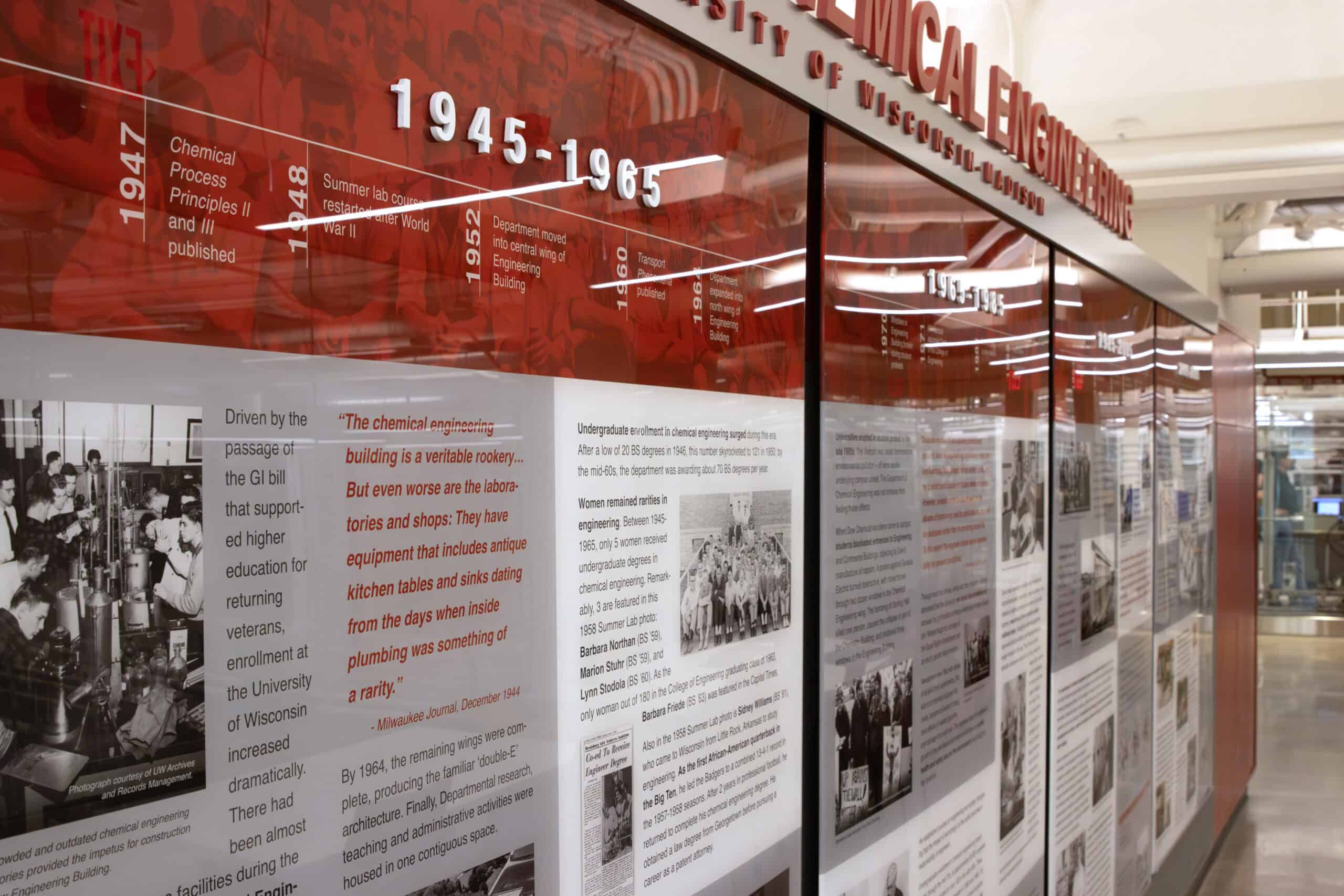
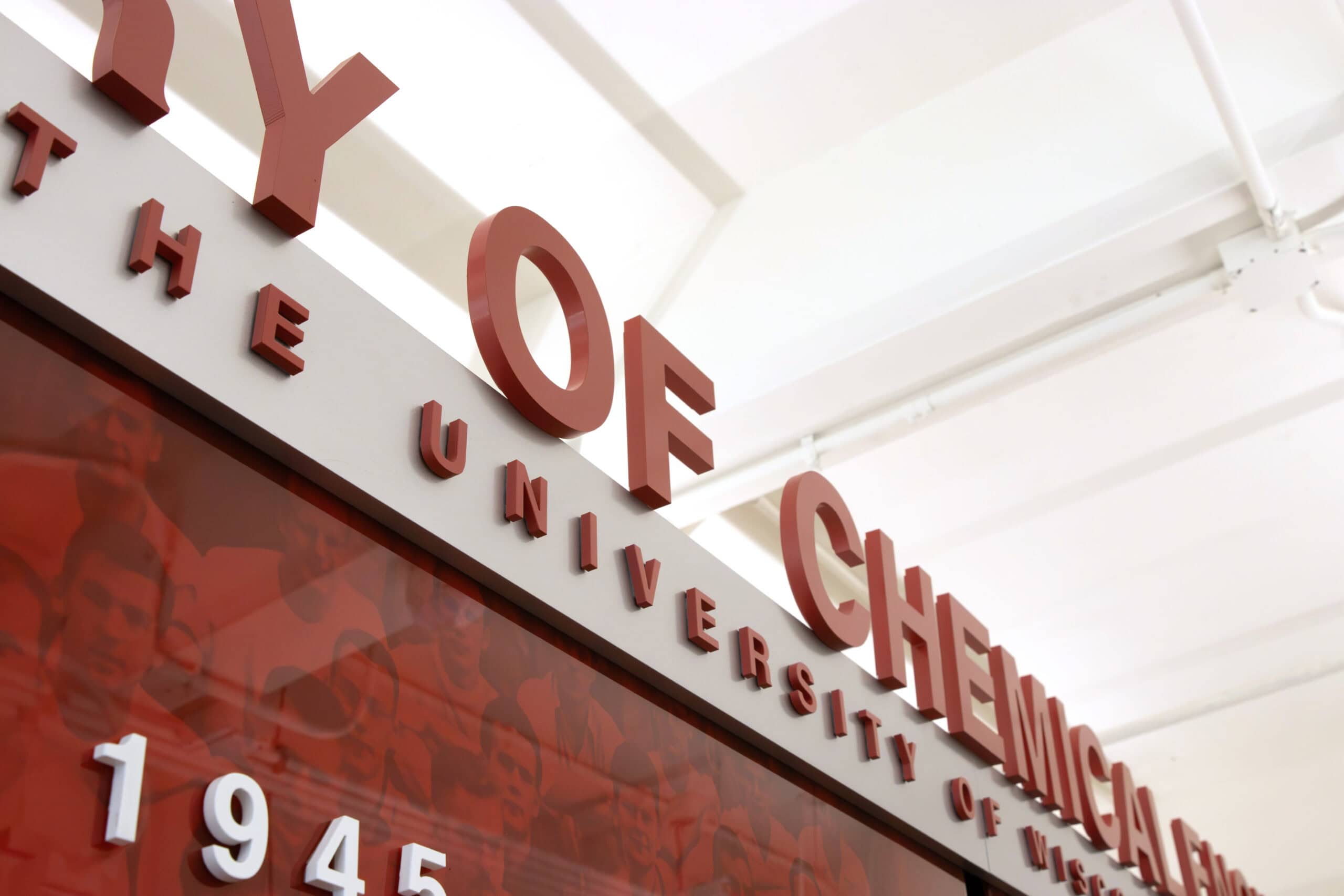

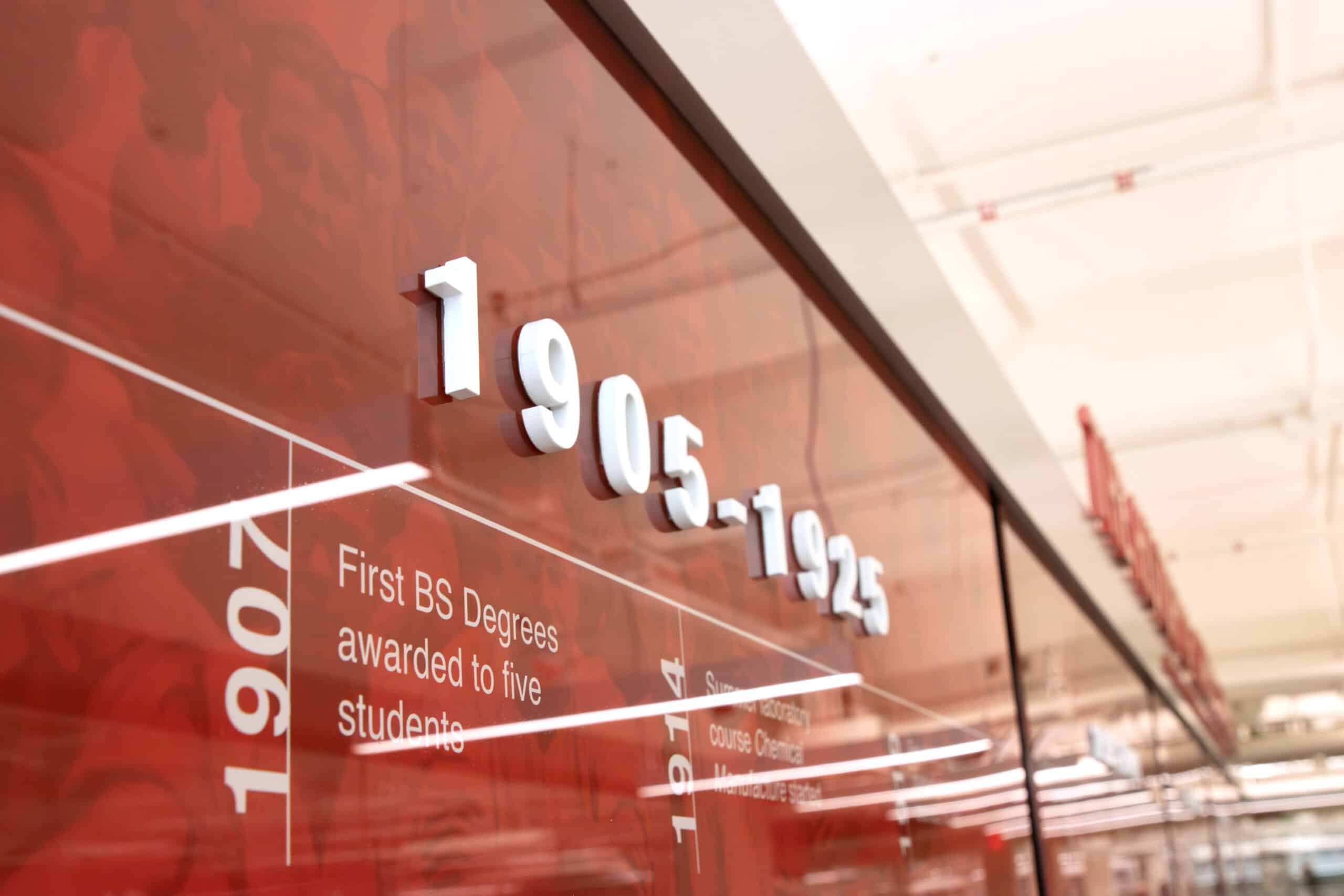
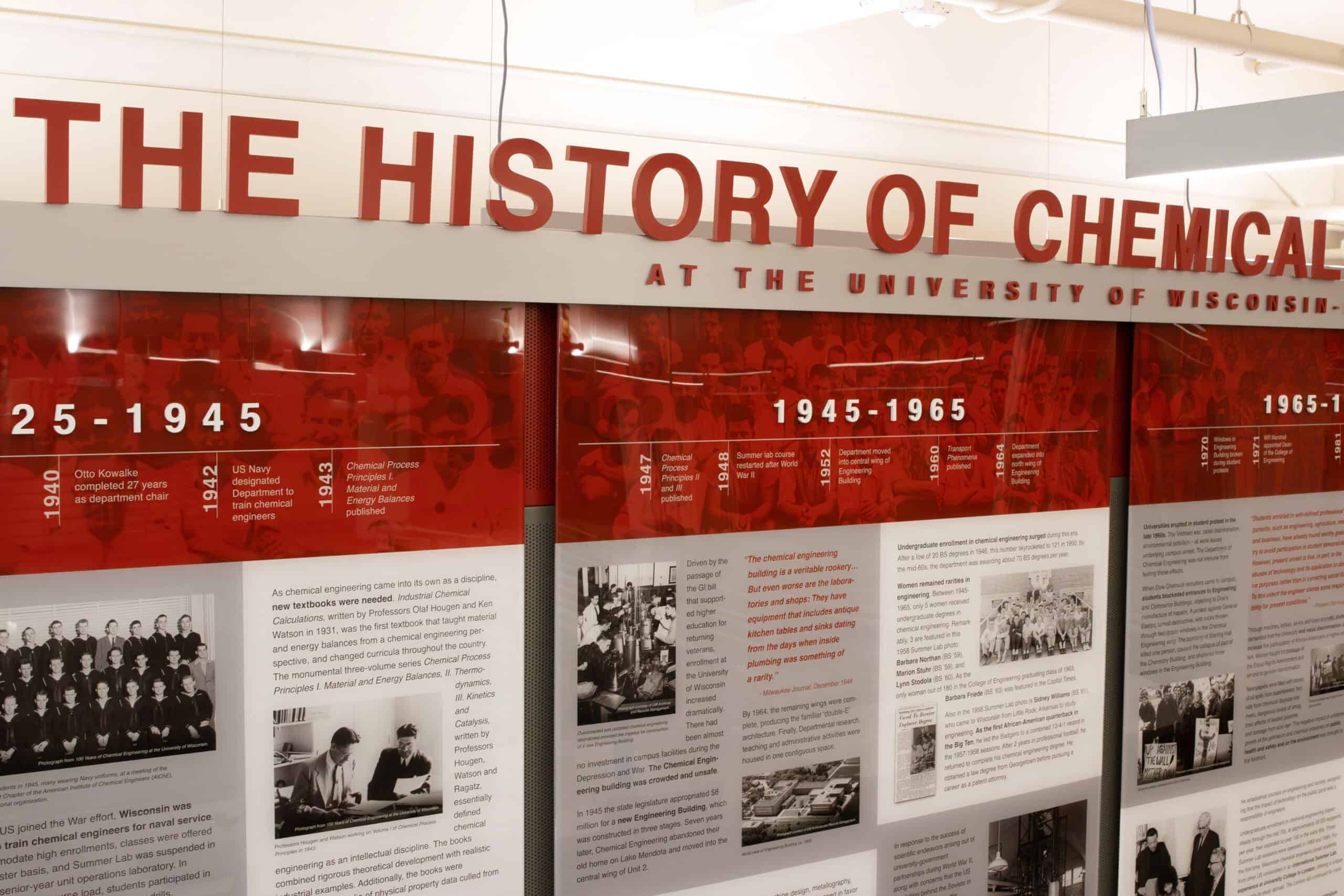
A third phase is already being explored—an interactive, potentially web-based multimedia archive that alumni, students, and visitors can explore on-site or online. While still in the planning stage, it’s envisioned as a living reservoir of stories, photos, and contributions that expand the physical display into a digital experience.
“Apparently, the alumni just show up,” Marconnet said with a smile. “There’s a real sense of community in this department, and we want to give them a space to reconnect and celebrate their shared history—and perhaps offer an insight or perspective that unlocks the next frontier.”
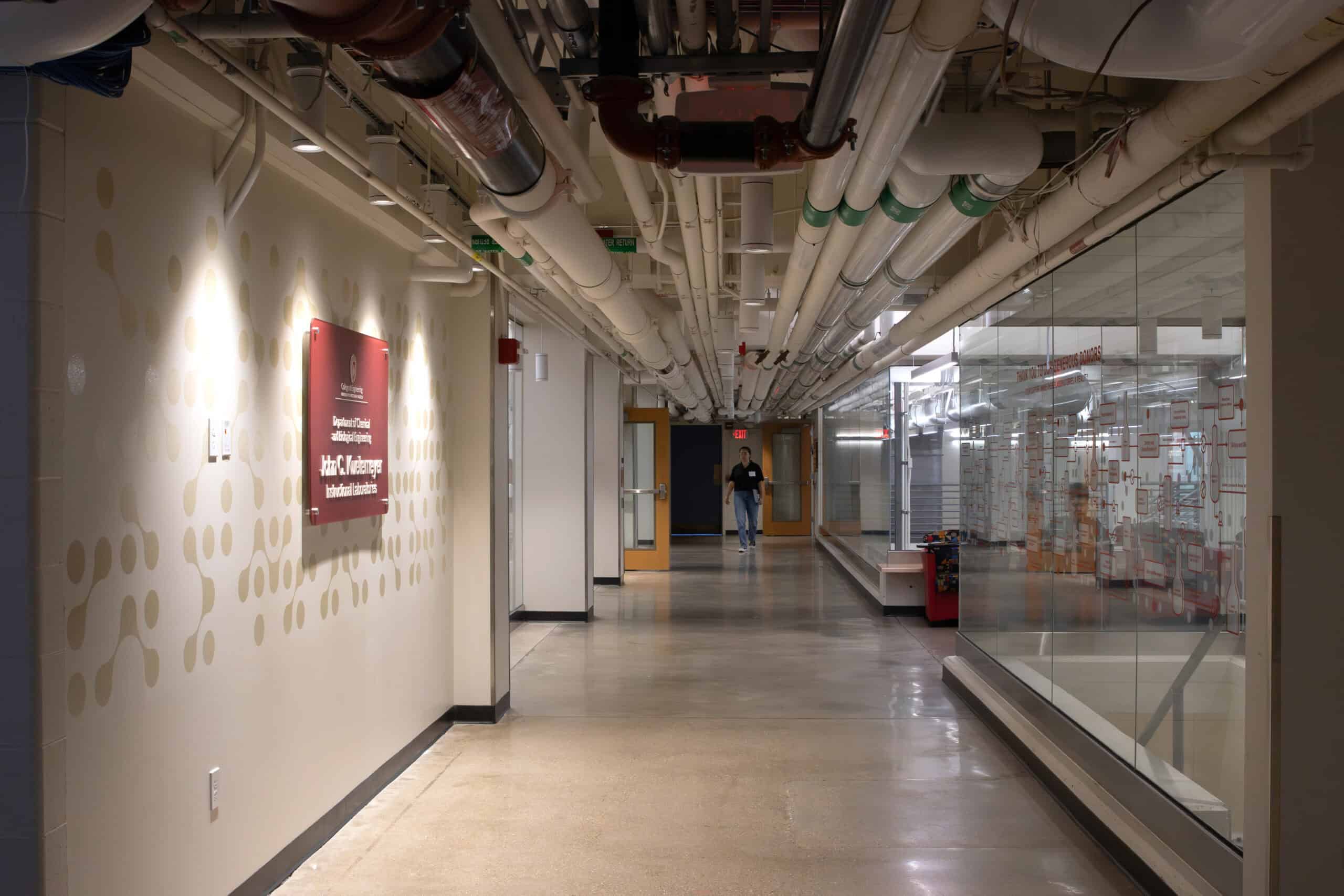

“It’s not just names on a wall. It’s chemistry, it’s community, it’s legacy—and it’s all worth celebrating and preserving.”
- Kris Marconnet, Senior Designer at Thysse
For Thysse, this project highlights more than aesthetic design. It’s a case study in aligning branding, storytelling, and space design to honor the people who power an institution that, itself, powers innovation that shapes industries the world over.
From donor recognition and space signage to department heritage and digital storytelling, every piece of this project was built to endure—not just physically, but in meaning.
If you’d like to see an idea make the jump from the metaphysical to our shared reality, we can don labcoats for dramatic effect—or we can just help make it happen. Reach out if you’d like to explore a vision with us!